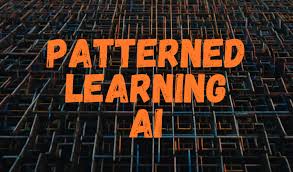Patterned AI learning has been a major changer in the ever changing field of artificial intelligence. With the help of this cutting-edge methodology, machines can now learn from data, see patterns, and make decisions or predictions with previously unheard-of accuracy. Artificial Intelligence (AI) systems have the potential to transform industries, yield new insights, and automate intricate processes through the use of pattern recognition.
What is Patterned AI Learning?
A subset of machine learning called “patterned AI learning” is concerned with finding and examining patterns in data. The notion that data is a complicated web of relationships and patterns rather than a random collection of points predicates this method. AI systems may learn to classify items, forecast outcomes, and make remarkably accurate decisions by identifying these patterns.
Types of Patterned AI Learning
There are several types of patterned AI learning, each with its unique strengths and applications:
- Supervised Learning: In this approach, the AI system is trained on labeled data, where the correct output is already known. The system learns to recognize patterns by mapping inputs to outputs.
- Unsupervised Learning: Here, the AI system is trained on unlabeled data, and it must identify patterns and relationships on its own.
- Semi-Supervised Learning: This approach combines elements of supervised and unsupervised learning, where the system is trained on a mix of labeled and unlabeled data.
- Reinforcement Learning: In this type of learning, the AI system learns by interacting with its environment and receiving rewards or penalties for its actions.
Click To Read: Future of Customer-Business Interactions: How AI Revolutionized
How Patterned AI Learning Works
The process of patterned AI learning involves several key steps:
- Data Collection: Gathering large amounts of data from various sources, such as sensors, databases, or social media platforms.
- Data Preprocessing: Cleaning, transforming, and preparing the data for analysis.
- Pattern Identification: Using algorithms and statistical models to identify patterns and relationships within the data.
- Model Training: Training the AI system on the identified patterns to enable it to make predictions or decisions.
- Model Evaluation: Testing the performance of the AI system and refining it as needed.
Click to Read Katt Williams’ Net Worth: The Comedian’s Rise to Wealth
Applications of Patterned AI Learning
The applications of patterned AI learning are vast and varied, including:
- Image Recognition: AI systems can recognize objects, people, and patterns within images, enabling applications such as facial recognition, object detection, and medical diagnosis.
- Natural Language Processing: Patterned AI learning enables AI systems to understand and generate human language, powering applications such as chatbots, language translation, and sentiment analysis.
- Predictive Maintenance: AI systems can analyze sensor data to predict equipment failures, reduce downtime and increase efficiency in industries such as manufacturing and logistics.
- Healthcare: Patterned AI learning can help diagnose diseases, identify high-risk patients, and develop personalized treatment plans.
- Cybersecurity: AI systems can detect and respond to cyber threats by identifying patterns of malicious behavior.
Benefits of Patterned AI Learning
The benefits of patterned AI learning, including:
- Improved Accuracy: AI systems can make predictions and decisions with unprecedented accuracy, reducing errors and improving outcomes.
- Increased Efficiency: Patterned AI learning can automate complex tasks, freeing up human resources for more strategic activities.
- Enhanced Decision-Making: AI systems can provide insights and recommendations, enabling humans to make more informed decisions.
- Scalability: Patterned AI learning can handle large amounts of data, making it an ideal solution for big data applications.
- Cost Savings: AI systems can reduce costs by optimizing processes, improving efficiency, and reducing errors.
Challenges and Limitations
While patterned AI learning has the potential to revolutionize industries, it also faces several challenges and limitations, including:
- Data Quality: The quality of the data used to train AI systems can significantly impact their performance.
- Explainability: It can be difficult to understand how AI systems arrive at their decisions, making it challenging to identify and address errors.
- Security: AI systems can be vulnerable to cyber attacks, data breaches and compromising sensitive information.
- Regulation: The lack of clear regulations and standards for AI development and deployment can create uncertainty and risk.
Conclusion
The potential for patterned AI learning to alter industries and our way of life at work is immense. We can realize the full potential of patterned AI learning and build a better future for everybody if we comprehend its types, uses, and advantages.
